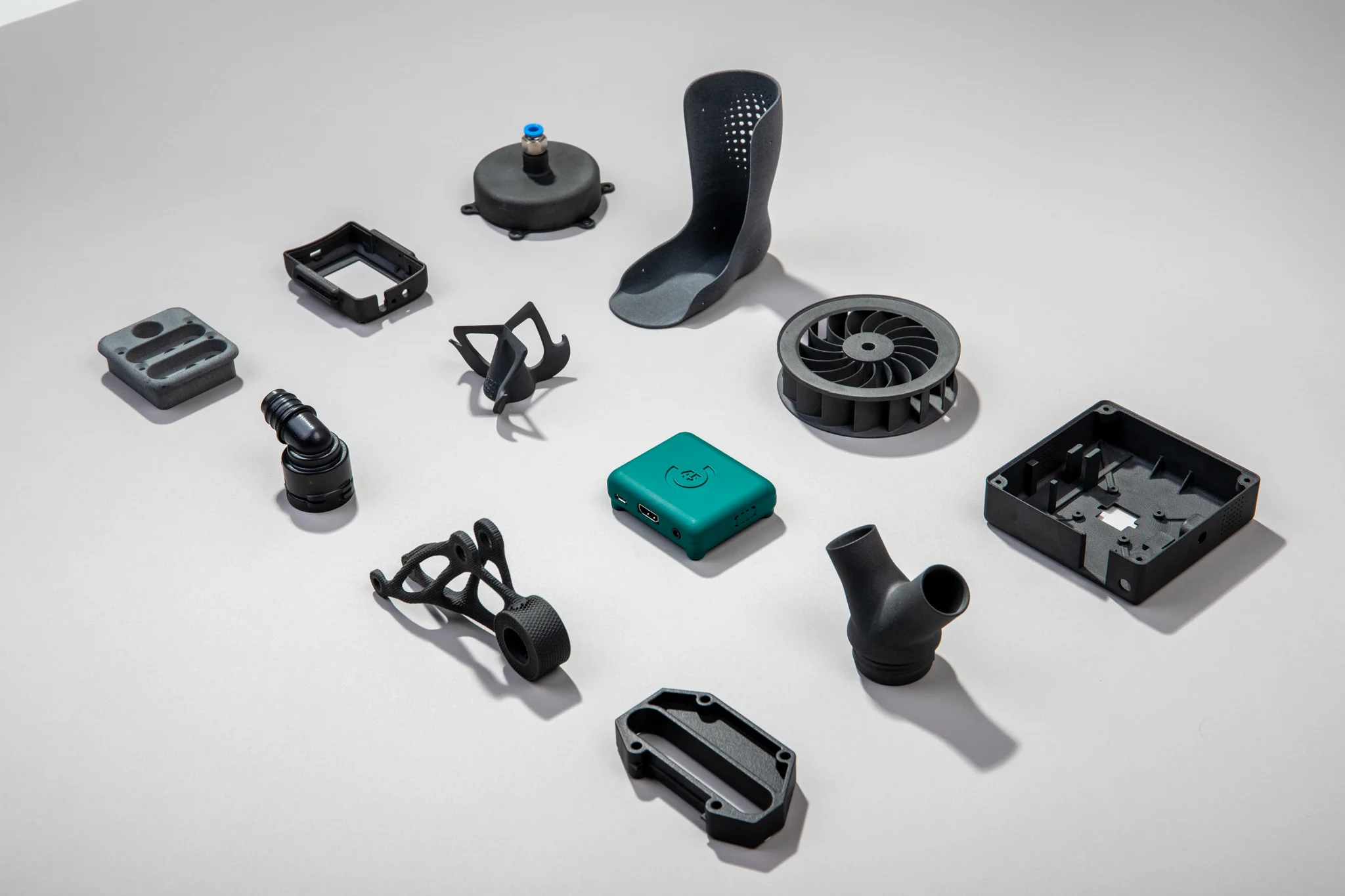For about a decade, 3D printing has been a completely standard element of the device implementation process. Desktop 3D printers based on FDM technology can be found in virtually every R&D department, not to mention hobby home studios.
Using modern printers, designers, and inventors can easily produce prototypes of housings and other elements on an ongoing basis to verify the concept and eliminate errors at an early stage.
But that’s not all. Thanks to HP, additive technologies can be used not only for prototyping but also for the production of short—and medium-series parts. Thanks to HP Multi Jet Fusion printers, companies can print functional prototypes and then, using the same technology, produce and introduce the first series of the product to the market.
In the article below, we will focus on the revolutionary impact of 3D printing on the hardware implementation process.
How does HP MJF technology meet the needs of companies developing innovative products?
One of the key elements of the hardware implementation process in many companies is the design and refinement of housing or other plastic elements based on subsequent series of prototypes.
Often using desktop 3D printers, designers and constructors slowly reach the perfect version in an iterative model. This process may take quite a long time, but in the end, it results in a final version, an investment in an injection mold, and the production of the necessary parts.
However, this standard process comes with some very serious risks:
- Financial risk: Purchasing an injection mold means investing even €100,000. It may be a serious blocker and risk for many companies if they don’t achieve the expected sales.
- Time risk: the process of ordering and manufacturing an injection mold is very time-consuming and may delay the launch of the product by up to several months.
- Project risk: The injection mold can’t be modified once it’s finished, so the product cannot be adjusted after it’s ordered. This is especially important for innovative projects that may require changes after receiving user feedback.
What’s revolutionary about HP Multi Jet Fusion technology is that it eliminates all of the above problems. Thanks to lightning-fast implementation and zero costs initial stage, our customers involved in the production of devices can quickly bring them to market and verify them with the help of users and then safely invest in an injection mold.
It was the exact plan that our clients had. The company is named Cortivision, and they create devices that analyze brain activity. Our client knew that they would eventually decide to use injection technology, but they needed an interim solution that would allow them to create the first commercial versions at an early stage, start selling, and refine the design. You can read about the progress of this project in our case study.
And here’s how the device looks:

5 reasons why hardware manufacturers produce parts using Multi Jet Fusion technology?
1. Zero upfront cost
For some companies, an injection mold is an inconvenient and risky investment, and for others, it is an unrealistic option. HP MJF 3D printers eliminate this financial barrier because they do not require any specialized tools or molds apart from the printer itself and the material. To start production, all you need is an appropriate CAD file.
2. Fast turnaround time
The processing time for orders for even several hundred parts of an element is only five business days under our service. By delivering parts to companies so quickly, we help them efficiently plan the production of subsequent series and enable much more efficient cash flow, which is especially important in the case of companies just releasing a product to the market.
3. Full freedom to change the design
One of the greatest advantages of additive technologies is their flexibility. The ability to quickly and cost-freely change the design between series without the need to create new molds allows you to constantly adapt products to changing market needs or specific customer requirements.
Moreover, companies can create smaller series so as not to have to risk making mistakes and freezing cash in products that are not suitable for sale.
This adaptability enables a more innovative approach to design and production without fear of costly error.
4. High printing precision
HP Multi Jet Fusion ensures high printing precision, achieving the accuracy of +/-0.3mm ≤ 100 mm, +/-0.3% >100mm. Such accuracy is crucial in hardware production, where even the smallest deviations can affect the functionality, quality, and safety of the final product.
5. Possibility to print complex geometries
Traditional manufacturing methods often limit designers to geometries that are difficult or impossible to produce. For HP MJF printers, few things are impossible due to the lack of support, precision, or the ability to create empty objects typical of 3D. This opens up new opportunities to create innovative and functional products that are lighter, more durable, and more effective.
Will 3D printing work for your product?
If you’re still unsure whether 3D printing is right for your project, check out a variety of options history of our clients who, with our help, introduced their own devices to the market:
Medical equipment housings for Berger & Kraft Medical
Electronic device housing for IC Solution


